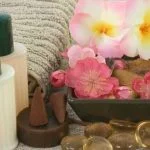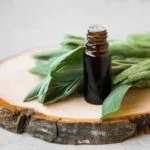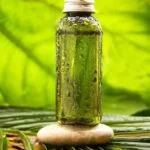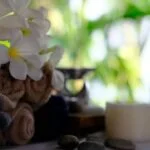Aromatherapy reed diffusers are a popular and effective way to enjoy the benefits of essential oils in your home. This article will provide a comprehensive guide on how to make your own DIY aromatherapy reed diffuser, including essential oil choices, carrier oils, and safety precautions. Whether you’re new to aromatherapy or an experienced enthusiast, creating your own reed diffuser can be a fun and rewarding project.
Aromatherapy has long been used for its therapeutic properties, and reed diffusers offer a subtle and constant release of essential oils into the air, providing a gentle and continuous aromatherapy experience. Understanding the different essential oils and their specific benefits is key to creating a personalized reed diffuser that suits your individual needs. From relaxation to invigoration, there’s an essential oil for every mood and requirement.
In this article, we’ll explore the step-by-step process of making your own aromatherapy reed diffuser, as well as tips on where to place it for maximum effectiveness. We’ll also discuss alternatives to reed diffusers for aromatherapy and how to personalize and customize your reed diffuser for different scents and moods. Finally, we’ll cover important safety precautions and best practices for using aromatherapy reed diffusers at home.
Understanding the Different Essential Oils and Their Therapeutic Properties
Essential Oils 101
Essential oils are highly concentrated liquids extracted from plants, containing unique aromatic compounds. These oils have been used for centuries in traditional medicine and aromatherapy due to their various therapeutic properties. Some popular essential oils include lavender, peppermint, eucalyptus, tea tree, and citrus oils like lemon and orange.
Therapeutic Properties of Essential Oils
Each essential oil has its own set of therapeutic properties, making them suitable for different purposes. For example, lavender oil is known for its calming and relaxing effects, making it ideal for reducing stress and promoting better sleep.
On the other hand, eucalyptus oil is commonly used for its invigorating and decongestant properties, which can help with respiratory issues and clear sinuses. It’s important to research the specific properties of each essential oil before using them in your aromatherapy reed diffuser.
Choosing the Right Essential Oils for Your Needs
When selecting essential oils for your DIY aromatherapy reed diffuser, consider your specific needs and preferences. If you’re looking for a mood boost or energy enhancement, citrus oils like orange or lemon could be a great choice. For relaxation and stress relief, opt for calming scents like lavender or chamomile. Understanding the therapeutic properties of different essential oils will help you create a custom blend that suits your desired outcome.
Step-by-Step Guide on How to Make Your Own Aromatherapy Reed Diffuser
Aromatherapy has become increasingly popular for its potential health benefits. Aromatherapy reed diffusers are a great way to enjoy the therapeutic properties of essential oils in your own home. Making your own aromatherapy reed diffuser is not only cost-effective but also allows you to customize the scents to suit your preferences and needs.
To make your own aromatherapy reed diffuser, you will need a few key ingredients: essential oils, a carrier oil, alcohol, reed sticks, and a glass container. When choosing essential oils, it’s important to consider their therapeutic properties. For example, lavender is known for its calming effects, while peppermint is invigorating and energizing. Each essential oil offers different benefits, so it’s important to choose ones that align with your desired outcome.
Once you have selected the essential oils, you can begin creating your DIY reed diffuser by mixing the essential oils with a carrier oil and alcohol in the glass container. The alcohol helps the mixture travel up the reed sticks more effectively, while the carrier oil dilutes the essential oils and helps disperse their scent.
Placing your reed diffuser in the right location is crucial for maximum effectiveness. Consider placing it in areas of your home where airflow is present, such as near doorways or windows. This will help circulate the scent more efficiently throughout the space.
By following these simple steps and experimenting with different essential oil combinations, you can create personalized aromatherapy reed diffusers that cater to your specific needs and preferences.
| Ingredients | Benefits |
|---|---|
| Essential Oils | Therapeutic Properties |
| Carrier Oil | Dilutes Essential Oils |
| Alcohol | Enhances Travel Up Reed Sticks |
| Glass Container | For Mixture |
Choosing the Right Carrier Oil for Your DIY Reed Diffuser
When creating your own aromatherapy reed diffuser, choosing the right carrier oil is crucial for ensuring the effectiveness of the essential oils and the overall performance of your homemade diffuser. Here are some popular carrier oils to consider for your DIY project:
1. Sweet Almond Oil: This light and slightly nutty-scented oil is a popular choice for reed diffusers. It has a long shelf life and works well with most essential oils, making it a versatile option for your DIY project.
2. Fractionated Coconut Oil: Unlike regular coconut oil, fractionated coconut oil remains in liquid form at room temperature, making it ideal for use in reed diffusers. It has little to no scent of its own, allowing the aroma of the essential oils to shine through.
3. Jojoba Oil: Known for its moisturizing properties, jojoba oil is another excellent carrier oil for reed diffusers. It has a mild scent and can help to prolong the aroma of the essential oils that you choose to use.
When selecting a carrier oil for your aromatherapy reed diffuser DIY project, consider factors such as scent neutrality, longevity, and compatibility with essential oils. Experimenting with different carrier oils can help you find the perfect combination for your desired scent and therapeutic benefits.
Remember that when working with carrier oils and essential oils, it’s important to store them in a cool, dark place away from direct sunlight to preserve their potency and shelf life.
Tips on Where to Place Your Reed Diffuser for Maximum Effectiveness
Aromatherapy reed diffusers are a great way to enjoy the benefits of essential oils in your home or office. However, in order to maximize their effectiveness, it’s important to place them in the right location. Here are some tips on where to place your reed diffuser for maximum effectiveness.
Choose a Central Location
When placing your aromatherapy reed diffuser, it’s best to choose a central location in the room. This will allow the scent to disperse evenly throughout the space, ensuring that you can enjoy the therapeutic benefits of the essential oils no matter where you are in the room.
Avoid Direct Sunlight and Drafts
It’s important to avoid placing your reed diffuser in direct sunlight or near drafts. Sunlight and drafts can cause the essential oils to evaporate more quickly, reducing the longevity of the scent. Instead, choose a spot away from direct sunlight and drafts for optimal diffusion.
Consider Room Size
The size of the room will also impact where you should place your reed diffuser. For smaller rooms, one reed diffuser may be sufficient, but for larger spaces, consider using multiple diffusers placed strategically around the room to ensure even coverage.
By following these tips on where to place your reed diffuser, you can ensure that you get the most out of your DIY aromatherapy experience. Whether you’re looking to create a relaxing atmosphere in your bedroom or promote focus and productivity in your home office, choosing the right location for your reed diffuser is key to enjoying its full benefits.
Alternatives to Reed Diffusers for Aromatherapy
When it comes to aromatherapy, reed diffusers are not the only option available for enjoying the therapeutic benefits of essential oils. There are several alternatives to reed diffusers that you can consider incorporating into your aromatherapy routine. Each alternative has its own unique advantages and can be used in different situations depending on your preferences and needs.
One popular alternative to reed diffusers is using an essential oil nebulizer or diffuser. These devices work by dispersing essential oil particles into the air without the use of heat or water, allowing you to fully experience the aroma and therapeutic properties of the oils. Another option is to create your own room spray using essential oils and water, which can be sprayed into the air whenever you want to enjoy a burst of aromatic goodness.
Candles infused with essential oils are also a great way to add a warm and comforting ambiance to any space while reaping the benefits of aromatherapy. Beeswax or soy candles are preferred as they burn cleaner than traditional paraffin candles and will not release harmful chemicals into the air.
Additionally, using an essential oil inhaler or personal diffuser can allow you to enjoy the benefits of aromatherapy on-the-go, providing relief from stress and promoting relaxation wherever you may be.
Lastly, creating your own scented body products such as lotions, balms, or bath salts with essential oils can be a wonderful way to incorporate aromatherapy into your self-care routine. Not only do these products smell amazing, but they also provide a range of therapeutic benefits for both the mind and body.
Experimenting with different alternatives to reed diffusers for aromatherapy allows you to find what works best for you and how you can incorporate these practices seamlessly into your daily life.
| Aromatherapy Alternative | Benefits |
|---|---|
| Essential Oil Nebulizer/Diffuser | Disperses oil particles without heat or water |
| Room Spray | Provides instant burst of aromatherapy when needed |
| Infused Candles | Adds warmth and comfort while releasing therapeutic scents |
| Personal Diffuser/Inhaler | Allows for on-the-go use of aromatherapy |
How to Personalize and Customize Your Reed Diffuser for Different Scents and Moods
Aromatherapy reed diffusers are a popular and effective way to enjoy the benefits of essential oils throughout your home. One of the best things about making your own aromatherapy reed diffuser is that you have complete control over the scents and moods you want to create. By personalizing and customizing your reed diffuser, you can tailor it to suit your specific needs and preferences.
Here are some tips on how to personalize and customize your reed diffuser for different scents and moods:
1. Choose the right essential oils: Start by selecting essential oils that align with the mood or atmosphere you want to create. For example, lavender is known for its calming properties, while citrus oils like orange or lemon can help uplift and energize the space.
2. Experiment with different oil combinations: You can create unique scent blends by mixing different essential oils together. For example, try combining lavender and chamomile for a soothing and relaxing blend, or peppermint and eucalyptus for a refreshing and invigorating scent.
3. Customize the appearance: Consider adding dried flowers, herbs, or decorative elements to your reed diffuser bottle to enhance its visual appeal. Not only will this make your DIY reed diffuser look beautiful, but it can also add an extra layer of aromatherapy benefits.
By personalizing and customizing your aromatherapy reed diffuser, you can create a sensory experience that is tailored to your individual preferences and needs.
Safety Precautions and Best Practices for Using Aromatherapy Reed Diffusers at Home
In conclusion, making your own aromatherapy reed diffuser at home is a simple and cost-effective way to enjoy the benefits of essential oils. Understanding the therapeutic properties of different essential oils is key in creating a personalized and effective reed diffuser for your needs. Choosing the right carrier oil will ensure that the scent is dispersed properly, and placing the diffuser in the right spot will maximize its effectiveness.
It’s important to note that while reed diffusers are generally safe to use at home, there are some safety precautions and best practices to consider. For example, keeping them out of reach of children and pets, and away from direct sunlight or heat sources. It’s also important to regularly check and replace the reeds and oil to maintain the effectiveness of your reed diffuser over time.
For those who prefer alternatives to reed diffusers, there are other methods such as electric or ceramic diffusers, room sprays, or even homemade linen sprays. Ultimately, incorporating aromatherapy into your daily routine can bring many benefits such as relaxation, stress relief, improved mood, and better sleep quality. So whether you choose a DIY reed diffuser or another method of enjoying essential oils, finding what works best for you is important for achieving overall wellness.
Frequently Asked Questions
How Do You Make an Aromatherapy Reed Diffuser?
To make an aromatherapy reed diffuser, start by choosing a glass container and adding 1/4 cup of carrier oil. Then, add 15-25 drops of essential oils, place the reeds in the oil, and flip them occasionally to refresh the scent.
What Is the Best Carrier Oil for Reed Diffusers?
The best carrier oil for reed diffusers is usually odorless and lightweight. Some popular choices include fractionated coconut oil, sweet almond oil, or mineral oil. These carrier oils help to spread the essential oils’ aroma without interfering with their scents.
Is It Cheaper to Make Your Own Reed Diffuser?
Making your own reed diffuser can be cheaper than buying a pre-made one, especially if you already have essential oils and a carrier oil on hand. However, purchasing all the materials upfront may require a larger initial investment compared to buying a ready-made reed diffuser.

Are you looking for a natural way to improve your health and wellbeing?
If so, aromatherapy may be the answer for you.





